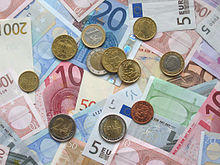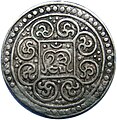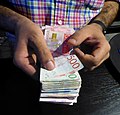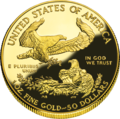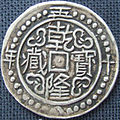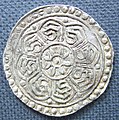Portal:Money
The Money PortalEuro coins and banknotes
Money is any item or verifiable record that is generally accepted as payment for goods and services and repayment of debts, such as taxes, in a particular country or socio-economic context. The primary functions which distinguish money are: medium of exchange, a unit of account, a store of value and sometimes, a standard of deferred payment. Money was historically an emergent market phenomenon that possessed intrinsic value as a commodity; nearly all contemporary money systems are based on unbacked fiat money without use value. Its value is consequently derived by social convention, having been declared by a government or regulatory entity to be legal tender; that is, it must be accepted as a form of payment within the boundaries of the country, for "all debts, public and private", in the case of the United States dollar. The money supply of a country comprises all currency in circulation (banknotes and coins currently issued) and, depending on the particular definition used, one or more types of bank money (the balances held in checking accounts, savings accounts, and other types of bank accounts). Bank money, whose value exists on the books of financial institutions and can be converted into physical notes or used for cashless payment, forms by far the largest part of broad money in developed countries. (Full article...) Selected article -Adam Smith (baptised 16 June [O.S. 5 June] 1723 – 17 July 1790) was a Scottish economist and philosopher who was a pioneer in the thinking of political economy and key figure during the Scottish Enlightenment. Seen by some as "The Father of Economics" or "The Father of Capitalism", he wrote two classic works, The Theory of Moral Sentiments (1759) and An Inquiry into the Nature and Causes of the Wealth of Nations (1776). The latter, often abbreviated as The Wealth of Nations, is considered his magnum opus and the first modern work that treats economics as a comprehensive system and an academic discipline. Smith refuses to explain the distribution of wealth and power in terms of God's will and instead appeals to natural, political, social, economic, legal, environmental and technological factors and the interactions among them. Among other economic theories, the work introduced Smith's idea of absolute advantage. Smith studied social philosophy at the University of Glasgow and at Balliol College, Oxford, where he was one of the first students to benefit from scholarships set up by fellow Scot John Snell. After graduating, he delivered a successful series of public lectures at the University of Edinburgh, leading him to collaborate with David Hume during the Scottish Enlightenment. Smith obtained a professorship at Glasgow, teaching moral philosophy and during this time, wrote and published The Theory of Moral Sentiments. In his later life, he took a tutoring position that allowed him to travel throughout Europe, where he met other intellectual leaders of his day. (Full article...) Selected currency - The Lincoln cent (sometimes called the Lincoln penny) is a one-cent coin that has been struck by the United States Mint every year since 1909. The obverse or heads side was designed by Victor David Brenner, as was the original reverse, depicting two stalks of wheat (thus "wheat pennies", struck 1909–1958). The coin has seen several reverse, or tails, designs and now bears one by Lyndall Bass depicting a Union shield. All coins struck by the United States government with a value of 1⁄100 of a dollar are called cents because the United States has always minted coins using decimals. The penny nickname is a carryover from the coins struck in England, which went to decimals for coins in 1971. In 1905, sculptor Augustus Saint-Gaudens was hired by the Mint to redesign the cent and the four gold coins, which did not require congressional approval. Two of Saint-Gaudens's proposed designs for the cent were eventually adapted for the gold pieces, but Saint-Gaudens died in August 1907 before submitting additional designs for the cent. In January 1909, the Mint engaged Brenner to design a cent depicting the late president Abraham Lincoln, 1909 being the centennial year of his birth. It was the first widely circulating design of a U.S. president on a coin, an idea that had been seen as too monarchical in the past, namely by George Washington. Nevertheless, Brenner's design was eventually approved, and the new coins were issued to great public interest on August 2, 1909. (Full article...) Did you know -
Related portalsGet involvedFor editor resources and to collaborate with other editors on improving Wikipedia's Money-related articles, see WikiProject Numismatics. Need help?Do you have a question about Money-related content on Wikipedia that you can't find the answer to? Consider asking it at the Wikipedia reference desk. General images - The following are images from various currency-related articles on Wikipedia.
In the news
CategoriesTopics– By region –
– By name –
– By country –
– Historical currencies –
– Other –
WikimediaThe following Wikimedia Foundation sister projects provide more on this subject:
SourcesMore portals |

